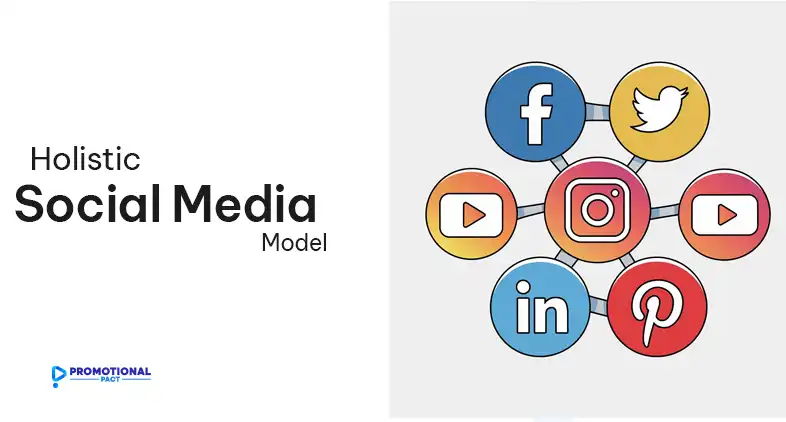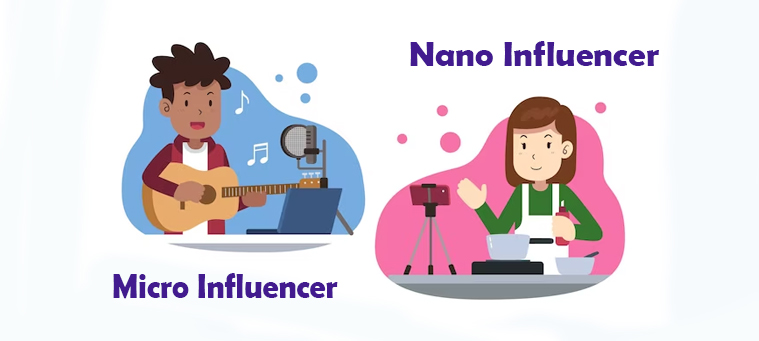
In today’s fast-paced digital world, social media strategies must be more than just reactive or platform-specific—they need to be holistic. But what does that really mean? A holistic social media model ensures that every action, message, and platform works in harmony toward a unified goal. Instead of treating platforms like Instagram, Twitter, or LinkedIn as separate entities, this approach integrates them seamlessly, maximizing their collective potential.
This isn’t just about efficiency; it’s about results. Studies show that businesses with integrated social media strategies are 30% more likely to achieve their marketing objectives. By the time you finish reading, you’ll understand not only why this model is important but also how to implement it step by step.
What Is a Holistic Social Media Model?
The term “holistic” might sound abstract, but in this context, it simply means looking at the bigger picture. Social media is no longer just a tool for broadcasting messages—it’s a complex ecosystem where marketing, customer service, brand management, and sales converge.
A holistic model unifies these functions. Imagine a customer discovering your brand on Facebook, engaging with a post on Instagram, and then completing a purchase through a Pinterest ad. Without a cohesive strategy, these touchpoints can feel disjointed, leading to missed opportunities and wasted resources.
Why does this matter? Because social media users don’t see your brand as fragmented. They expect consistency—from tone and visuals to the quality of interaction. Adopting a holistic approach allows you to meet these expectations, improving both user experience and business outcomes.
Core Principles of a Holistic Social Media Model
At its heart, the holistic model rests on four key principles, each critical for building a strategy that drives meaningful results:
Integration Across Platforms
One of the biggest mistakes brands make is treating each platform as an island. In a holistic approach, platforms like TikTok, LinkedIn, and Twitter work together rather than competing for attention. This doesn’t mean posting the same content everywhere—it means ensuring that your messaging complements itself across channels.
For example, a product launch campaign might involve:
- Instagram Stories for teasers.
- Twitter for live updates.
- LinkedIn for professional insights into the product’s development.
By integrating these channels, you create a multi-dimensional narrative that resonates with diverse audiences.
Audience-Centric Approach
Do you really know your audience? A holistic model places them at the center. Social media users aren’t monolithic; they have varied preferences, pain points, and expectations. Start by segmenting your audience based on demographics, interests, and behaviors.
For instance:
- Millennials might prefer short, snappy TikTok videos.
- Professionals on LinkedIn may value in-depth articles or case studies.
Tailoring content for these segments ensures higher engagement and better ROI.
Data-Driven Decision Making
Guesswork doesn’t work anymore. With countless analytics tools available, there’s no excuse for making uninformed decisions. Whether it’s tracking engagement rates, click-through rates, or customer acquisition costs, a data-driven approach ensures your strategy is both effective and adaptable.
A great example is Starbucks, which uses data from social media interactions to personalize its marketing. By analyzing comments and posts, they fine-tune everything from drink recommendations to store promotions.
Adaptability and Evolution
Social media is ever-changing. Algorithms shift, platforms rise and fall, and audience preferences evolve. A holistic model thrives on adaptability. The brands that succeed are those that stay ahead of trends while staying true to their core message.
Take Netflix, for instance. They’ve mastered the art of adapting memes, gifs, and trends to promote their shows while maintaining their brand identity.
Pillars of a Holistic Social Media Strategy
Building a holistic social media strategy is like constructing a house—it needs a solid foundation. Here are the five main pillars:
Content Strategy
At the heart of any social media effort lies content. However, a holistic approach demands more than sporadic posting. It requires a thoughtful, balanced mix of content types: promotional, educational, and entertaining.
For example, Nike doesn’t just promote products—they tell stories of resilience and achievement, inspiring their audience. This storytelling fosters brand loyalty, making them a go-to brand even in competitive markets.
Engagement and Community Building
Social media isn’t a one-way street. Engaging with your audience is just as important as creating great content. Responding to comments, participating in trending conversations, and encouraging user-generated content (UGC) all contribute to building a loyal community.
For instance, brands like Glossier have built cult-like followings by actively featuring customer reviews and stories on their social channels. This level of engagement makes followers feel valued and heard.
Paid Media and Organic Growth
A successful strategy balances both organic efforts and paid campaigns. While organic growth builds trust and credibility, paid media amplifies your reach. The key is to invest in platforms where your audience is most active and tailor ads accordingly.
Statistics show that businesses achieve 10x higher ROI when they combine paid and organic strategies effectively.
Tools and Technologies for Implementing a Holistic Social Media Model
The modern landscape offers a plethora of tools to support a holistic social media strategy. The right tools can streamline workflows, enhance collaboration, and provide actionable insights. Here’s how to leverage them effectively:
Social Media Management Platforms
Tools like Hootsuite, Sprout Social, and Buffer allow brands to manage multiple accounts, schedule posts, and analyze performance—all from a single dashboard. This centralization is key for maintaining consistency across platforms.
For instance, a clothing brand might schedule Instagram posts to showcase new arrivals while simultaneously planning LinkedIn content focused on ethical sourcing practices.
Analytics and Reporting Tools
Data is the backbone of a holistic approach. Platforms like Google Analytics, Sprinklr, and Brandwatch provide detailed metrics on audience behavior, content performance, and campaign ROI.
These tools can help answer questions like:
- Which platform drives the most traffic to your website?
- What types of content yield the highest engagement rates?
Customer Relationship Management (CRM) Tools
Integrating social media with CRM platforms like HubSpot or Salesforce ensures seamless tracking of customer interactions. This creates a unified view of each customer, from their first social media touchpoint to post-purchase follow-ups.
Step-by-Step Guide to Building a Holistic Social Media Model
Step 1: Define Clear Goals
Start by identifying your objectives. Are you aiming for brand awareness, lead generation, customer retention, or all three? Each goal will shape your strategy.
For example:
- If brand awareness is the focus, prioritize platforms like Instagram and TikTok that emphasize visual storytelling.
- For lead generation, consider LinkedIn and Twitter, where thought leadership and direct messaging thrive.
Step 2: Conduct an Audit
Analyze your existing social media presence. Which platforms are performing well? Where are the gaps? Use this data to refine your approach and eliminate redundancies.
Step 3: Map the Customer Journey
A holistic model requires understanding how customers interact with your brand across platforms. Outline the steps, from discovery to purchase, and identify how each social channel contributes to the journey.
Step 4: Develop a Unified Content Plan
Craft a cohesive content calendar that aligns messaging across platforms while respecting their unique dynamics. For example, detailed blog snippets may perform well on LinkedIn, while Instagram thrives on visually appealing reels.
Step 5: Monitor, Analyze, and Adapt
The process doesn’t end after execution. Continuously monitor metrics, analyze results, and refine your strategy. Adaptability is the cornerstone of a successful holistic model.
Benefits of Adopting a Holistic Social Media Model
The advantages of this approach extend beyond marketing success:
- Improved ROI: Studies show brands with integrated social media strategies can achieve 20% higher conversion rates compared to fragmented efforts.
- Consistent Brand Voice: A unified model ensures consistency in tone, visuals, and messaging, which builds trust among your audience.
- Better Resource Allocation: With clear goals and integrated platforms, resources are directed where they’re most effective.
- Enhanced Customer Experience: Seamless interactions across platforms lead to higher customer satisfaction and loyalty.
Key Takeaways
Building a holistic social media model is an investment in the long-term success of your brand. By integrating platforms, focusing on audience needs, and leveraging data, you can create a strategy that delivers real value. While challenges exist, the rewards far outweigh them—offering higher ROI, improved brand perception, and stronger customer relationships.
If you’re ready to transform your social media strategy, start by auditing your current efforts and aligning them under a unified vision. The results will speak for themselves.

